The smart HVAC controls living lab functions to replicate controls technologies and connection method used for simulating a typical NSW air conditioning controls scenario in the Buildings Evolved living lab. The Buildings Evolved Laboratory had been fitted with a Daikin Sky VRV system in late October 2019 and was chosen as it was a similar type to those found in NSW Schools.

Location: Australia
Industry: Education
Project Funding: $200K
Project Website: http://ihub.org.au
Project Funder: This project was funded by the Australian Renewable Energy Association (ARENA), a federal government agency.
Key Outcomes
The purpose of testing control strategies in proof-of-concept living lab is to:
Develop a Technology Stack
- develop full vertical proof-of-concept of the Operational Technology and Information Technology to be used at NSW Schools in DCH 6;
- recreate and test SINSW control logic to determine baseline/BAU controls operation;
- demonstrate control functionality in concert with solar inverter operation, energy generation and onsite consumption, noting that testing of batteries operation and control are not available as batteries are not installed in the laboratory;
- provide a local historian functionality with more detailed information than sent to DCH;
Develop Connectivity and Optimisation
- integrate the smart HVAC controls living lab with DCH to demonstrate operational capability and response times through various IoT integration layers, on-premise server Node RED – DCH response and latency testing;
- allow CSIRO and Buildings Evolved teams to rapidly develop control algorithms; and
- manipulate air-conditioning set-points in response to internal and external conditions, such as:
- internal/external temperature, humidity and internal C02 levels;
- in context of ASHRAE Comfort Bands; and
- control signals from AEMO (simulated).
Reduce Project Risk
- for Buildings Evolved consultants and staff to “Live” the control system, meaning effective debugging of functionality and logic;
- reduce risk in the specification, tendering and commissioning phases of works;
Scope
Concept Design
A series of concept design diagrams were developed for the prop-tech in the living lab.
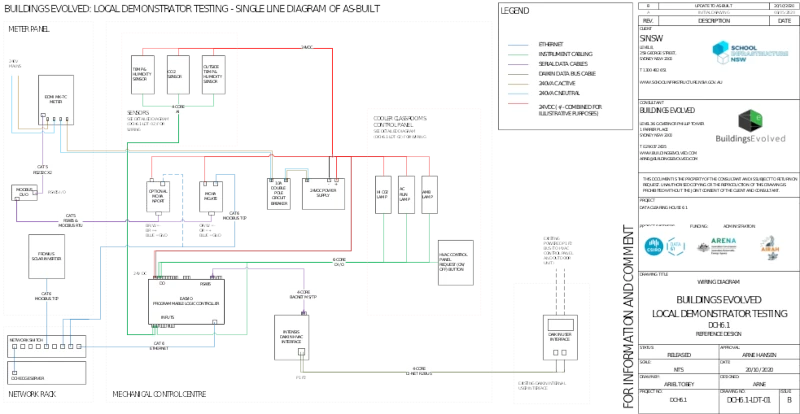
Components in the operational technology part of the smart HVAC controls living lab include:
- EasyIO FS32 Programmable Logic Controller;
- Intesis Daikin RCnet to BACnet gateway;
- Moxa mGate to EDMI meter & Smart Building Services Modbus adapter;
- Moxa nPort to EDMI debug/programming port;
- Stainless steel control panel;
- CO2, temp and RH sensors;
- Outdoor temp and RH sensor; and
- Power supplies and relays.

Prototyping
Using the list of components from the concept design, the parts were ordered and a functional mock-up created on the bench.
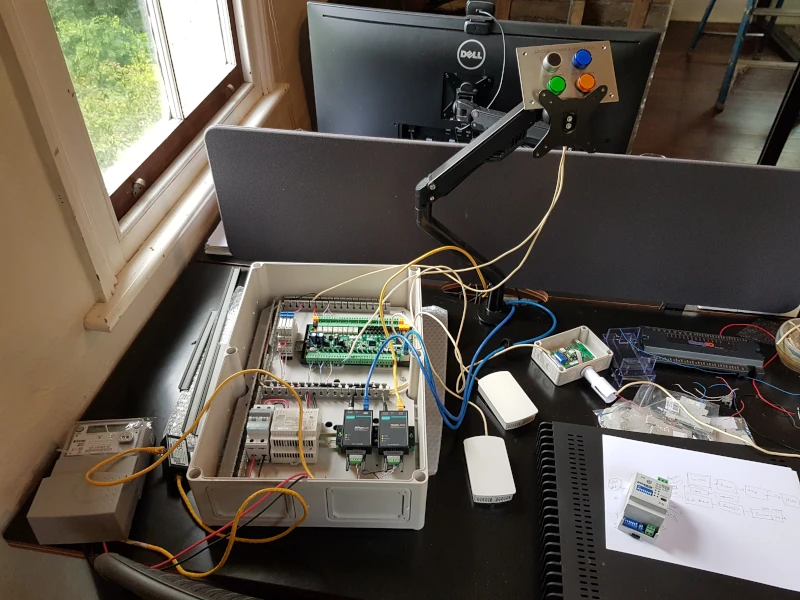 A small MCC including PLC with attached sensors, gateway, EDMI meter and control panel.
A small MCC including PLC with attached sensors, gateway, EDMI meter and control panel.
The basic rules based logic was then programmed into the EasyIO PLC, which could be considered the ‘brain’ of the operation.
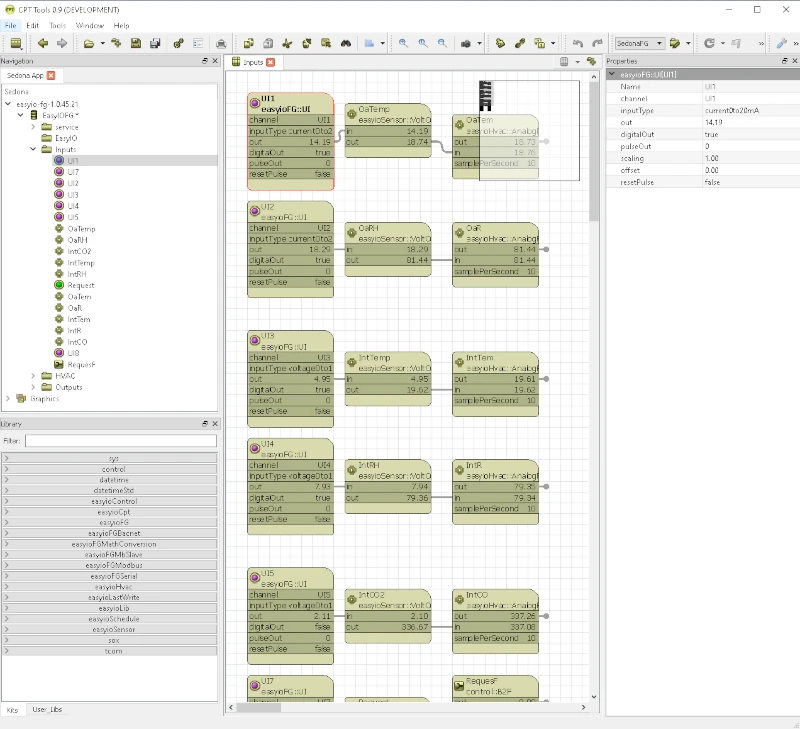 Programming an EasyIO PLC using proprietary ‘CPT Tools’.
Programming an EasyIO PLC using proprietary ‘CPT Tools’.
Installation
Buildings Evolved tendered the installation, with the appointed contractor being a highly experienced electrical and mechanical integration expert.
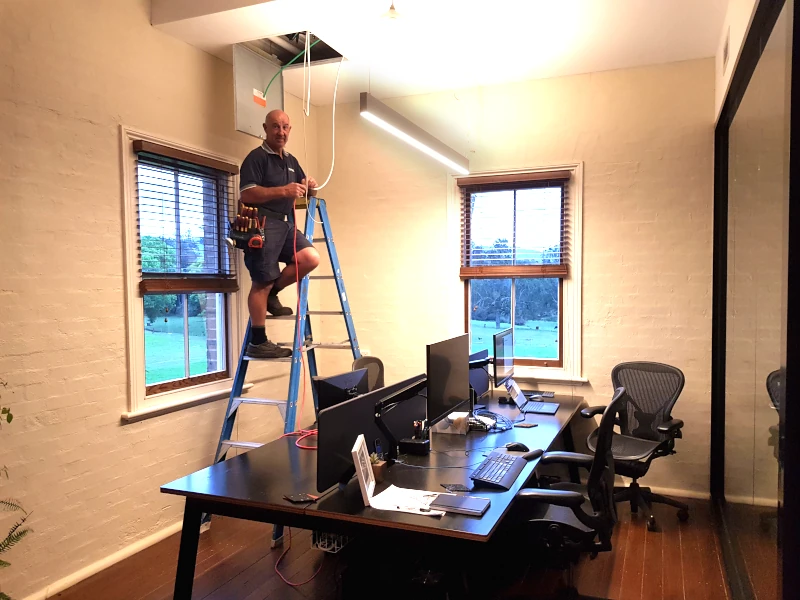 Installation of lab equipment underway by the appointed controls contractor.
Installation of lab equipment underway by the appointed controls contractor.
 CO2 (LHS) and Temp/RH (RHS) sensors installed.
CO2 (LHS) and Temp/RH (RHS) sensors installed.
 Outdoor Temp/RH sensor was added to provide data for thermal comfort optimisation control strategy development.
Outdoor Temp/RH sensor was added to provide data for thermal comfort optimisation control strategy development.
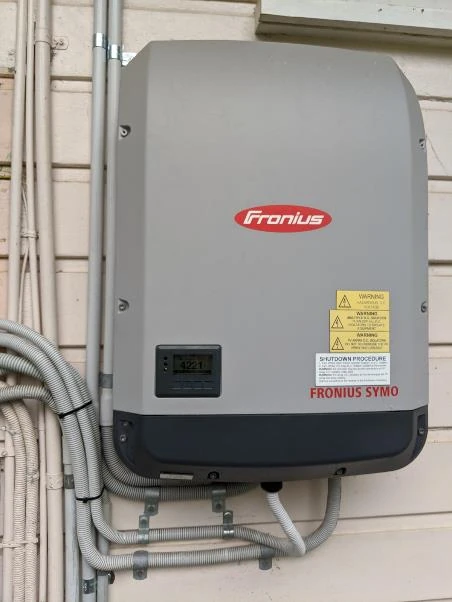 A Fronius solar PV inverter was connected to the living lab to provide solar generation data in real-time.
A Fronius solar PV inverter was connected to the living lab to provide solar generation data in real-time.
In addition, the EDMI meter pictured above was installed behind the gate meter, as the lab is on a small-market electricity contract. Large-market customers can ask for Modbus to be provided directly on the electricity meter itself.
Networking
Information technology and operational technology merge using Modbus TCP as the protocol for connecting these two worlds of technology. Node-red has been used extensively to act as the software stack, converting raw values into JSON objects, and from there being able to manipulate, mutate, organise, filter and packetise with metadata for sending to a database. In this case, both a local InfluxDB instance as well as remote send to CSIRO Data Clearing House.


